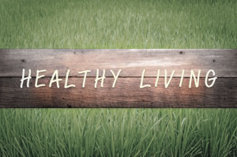Guide to Safe & Healthy Living

The mission of the National Safety Council (NSC) is to save lives. Through leadership, education, leadership and advocacy, the NSC focuses on preventing injuries and deaths in the workplace, in homes, in communities, and on the roads. The month of June is observed as National Safety Month, and the NSC join with thousands of other organization across the nation in raising awareness of prevention efforts focused on reducing leading causes of injury and death.
National Safety Month
The 2015 theme for National Safety Month is “What I Live For” in celebration of individual passions for living life. In recognition of the fact that every person has something in life they live to experience or see, the NSC theme for 2015 celebrates the passions by promoting the safe behaviors which enable a person to live for what matters to them.
During June, the NSC celebrates “What I Live For” by sharing people’s stories, and providing resources others can use as tools to raise safety awareness. The focus of National Safety Month 2015 is on the topics of transportation safety, emergency preparedness, ergonomics (the science of designing and arranging things so people can use them safely and easily), slips, trips and falls—and prescription painkiller abuse.
A Guide to Safe and Healthy Living
According to the NSC, the nation’s leading safety advocate, unintentional injuries and death are the fifth leading cause of fatalities in the United States. Spotlighting these issues, and educating people that recognizing hazards and knowing the right way to do things is vital in avoiding unintentional injuries and death.
The following guide spotlights key safety issues and effective prevention measures that a person can implement for a safer and healthier life for themselves and others they care about.
Prevent Teen Car Crashes
According to the NSC, half of all teenagers will be involved in a car crash prior to graduating from high school. There are things you can do to help your teen stay safe. While state laws attempt to protect teen drivers, household rules and ensuring those rules are followed are just as important. Set the rules your teen needs to follow regarding cell phone use, nighttime driving, passengers in the vehicle, and alcohol consumption.
Inexperience, nighttime driving, failure to wear a seatbelt, inclement weather, and a single young passenger (even a sibling) are all known to increase the incidence of accidents and injury. Ensure your teen has adequate driving instruction, and supervised time behind the wheel.
Prevent Distracted Driving
According to the NSC, it is estimated that 1 in 4 car crashes involves the use of a cell phone. While driving presents a multitude of distractions, cell phones rank at the top. While hands-free devices are considered by many to risk-free, it is not proving-out to be factual.
The simplest and safest measure to take is to stop using your cell phone while you are driving, and get your friends and family to do the same.
Improve Your Workplace Safety
No matter where we work, a safe, clean and worker-friendly environment makes our work-a-day world and our life more pleasant and liveable. A workplace in which we feel safe and secure boosts our morale, and makes us more willing to produce our job-related products.
Help create a safer, cleaner and more worker-friendly environment in your place of work. Caring about what happens, and caring about your environment are important to making it safer and healthier.
Improve Your Community Safety
Extensive worldwide research has shown that even modest community safety improvements produce significant social and economic benefits. Whether it is equipment at the local playground or park, fencing in a community area, a sidewalk that needs repair, or something else you notice that could use some improvement, upgrade or repair, do your part to help.
Preventing falls, drowning, fire-related injuries, and increasing emergency preparedness are all way to effectively improve community safety.
Schools, Chambers of Commerce, Fire Departments, Park Districts, Police Departments, and community residents call all work together to make a safer and healthier community.
Prevent Prescription Painkiller Abuse
According to the NSC, the leading cause of off-the-job deaths is prescription drug overdoses, and the most fatally abused drug in America is prescription painkillers
According to the National Safety Council, opioid painkillers contain morphine and codeine, and while people may have the idea that opioids are the best way to treat pain, there are non-addictive medicines known to be just as effective.
Know the common types of opioids:
- Hydrocodone (Lortab or Vicodin)
- Oxycodone (Percocet or Oxycontin)
- Oxymorphone (Opana)
- Methadone
- Fetanyl
Treat over-the-counter (OTC) and prescription drugs with caution. Be aware that the following conditions increase prescription painkiller-related risks:
If your doctor recommends an opioid painkiller, understand what conditions will increase your risk:
- A history of addiction.
- COPD (Chronic Obstructive Pulmonary Disease)
- Anxiety
- Depression
- Sleep apnea (transient cessation of respiration during sleep)
Ask for an alternative pain reliever such as Ibuprofen or Naproxen. While no pharmaceutical drug is without side-effects or consequences, these do not present the high addiction risk of opioid painkillers.


